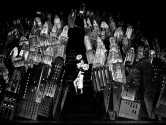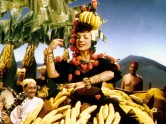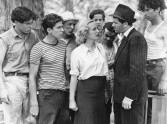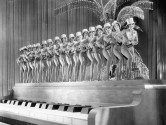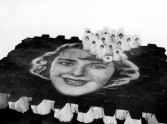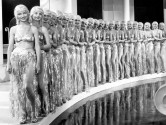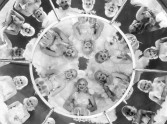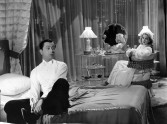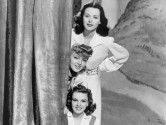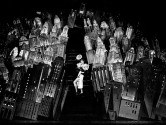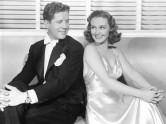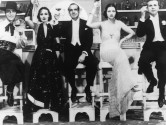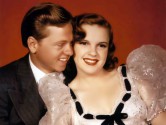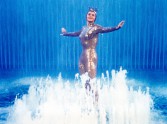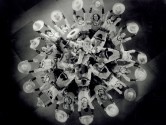
The Gang's All Here
With Alice Faye, Carmen Miranda, Phil Baker.
US, 1943, 35mm, color, 103 min.
Print source: Criterion
Employing large props, walls of water, sweeping crane shots, reverse motion and neon with new special effects, the title The Gang’s All Here might as well refer to the contents of Berkeley’s bag of tricks, which sends this sentimental wartime love story soaring into outer space. Happily uniting the otherworldly and exotic with the home front in the form of Carmen Miranda, the dizzying opening sequence also introduces the main elements of Berkeley’s world: disorienting surrealism, spatial deception, hyper-color and sheer, unfettered spectacle. Led by music that giddily vacillates between lyrical inanity and somber melodrama, the theatricality and obvious artificiality of Berkeley’s narrative space becomes confused with the purely spectacular and, eventually, overwhelmed by it. Miranda’s showpiece “The Lady in the Tutti Frutti Hat”—an erotic, hypnotic fruit-filled fantasy with a tropical twist—needs no reason to exist, nor does the astonishing, hallucinatory finale “The Polka Dot Polka.” From a bird’s-eye view of Benny Goodman and his orchestra to a surprisingly sleek sci-fi sequence with neon hoops, the sensory extravaganza is finally crushed into total abstraction through a kaleidoscopic lens. By the end, the actors’ disembodied heads are each singing in a sea of pure color. The mundane, ubiquitous polka dots have become stars, existing not just in the sky but everywhere on Planet Berkeley.

